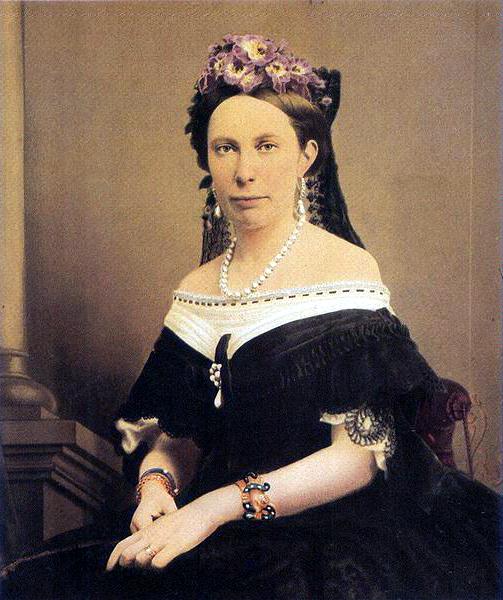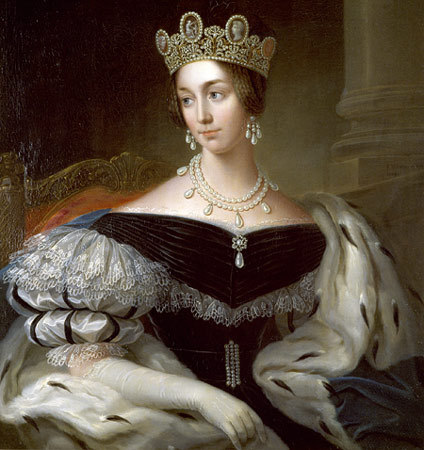Here comes the second part of the historical hair care series! Let's see how 19th century ladies dealt with oily hair.
I've delved, into a few threads on forums and blog posts lately regarding ~19th century hair care. The sources, seem to be for British/American hair care during the era, and I found some interesting tidbits! I'll summarise some points, which I personally found extra worthy of note, but I'll also link the sources for anyone interested.
Frequent Brushing
The Pragmatic Costumer explains, in a wonderful way, how ladies of the 19th century actually weren't afraid of getting oily hair. For someone like myself, born in the 1990's long after the advent of the modern shampoo, oily hair has always been avoided like the plague. And, oily hair can only be avoided through shampooing, right? Apparently, around 1918, the average seemed to be to wash your hair every three weeks (Mental Floss), and as far as I understand, just a few decades earlier during the 19th century, women didn't wash more often than that. What they instead did, according to the Pragmatic Costumer, was to detangle gently with a comb, and then brush through with a natural bristle brush. A boar bristle brush, is a good option that is easy to find in modern stores (I own two!!). The bristles, will soak up some of the sebum (technical term for "oil") and spread the rest along the hair shaft, moisturising the hair and giving it a "clean" look. The bristles, will also brush out actual dirt. Sebum is good for your hair! The hair, will look a bit more slicked than what we're used to in the voluminous schampoo-era. Fans of boar bristle brushing today, will also tell you it's important to clean the brush quite often as it soaks up some of the sebum, and will deposit it back on the hair the next time you brush, unless you give it a proper cleaning.
Infrequent Washing
Eventually, it would be time for wash-day, even for a 19th century lady. Soap, has long been a method of cleaning hair. It still has a great following today. With my hair type, and since I live in an area with hard water, soap isn't a good option for me. That's why I quite liked what the English History Authors have to say about dealing with oily hair. Eggs, instead of modern shampoo, does the trick of cleaning oily hair. I've tried this myself, long ago before I even started reading up on 19th century hair care, and it works great! It's a bit finicky, to get it onto your scalp, and you need to give yourself a good scalp massage with it to make sure it gets all the sebum off. Also, be sure to not rinse your hair with too warm water, as you'll (literally) get scrambled eggs in your hair and that's a nightmare to get rid of! Yuck! For less oil-prone hair, a honey rinse is recommended. The original recipe, is apparently to dissolve a little honey in "spirits" (alcohol), but I'm curious to find an alcohol-free recipe for that. A third method, to deal with oily hair, is to apply powder on it at night, leave it to soak up the sebum overnight, and then brush out the powder in the morning. Interestingly, this is pretty much historical dry shampoo. Personally, I've had some success applying baby powder at night and then brushing it out in the morning, but mostly I rely on regular dry shampoo for a quick fix.
Integrating Historical Methods in a Modern Hair Routine
Quoting Our Heritage of Health: "Cleanliness is a Matter of Perception". Today, most (including myself), see oily hair as "dirty" hair. It's gross, it's just "not socially acceptable". Back in the day, oily hair wasn't seen that way. And their hair was better off for it, too, I think. Frequent shampooing, is damaging to your hair, which isn't that much of a problem if you have bra strap length hair or shorter, but might be a problem if you have coloured hair (especially bleached), heat style a lot, or have longer hair. A problem you may face, if you clean your hair with anything but modern sulphate shampoos, is that they don't clean out silicones. Silicones, are a common ingredient in many modern hair products, and may build up over time if you don't clean them out with sulphates, leaving you with lank hair. If you don't avoid silicone products, going full on 19th century hair care might be difficult. Actually, a few modern day alternative methods for cleaning hair, such as sulphate free shampoos or conditioner-only, may not work well either. In this case, you have a few options, for example: 1) avoiding silicones all-together; 2) "clarifying" your hair with a sulphate shampoo as often as needed, alternating with e.g. egg washes or conditioner-only. Honestly, there are so many ways you can put together your own hair care routine, those are only two out of many options!
Sources Used
This is just my personal highlights from these sources, but for anyone interested, you should definitely go have a look at the original content. There you'll find so much more that I personally don't take inspiration from at this point in time, but you might! For example, there is plenty of information on oils and pomades, and recipes for washing including ingredients such as brandy and borax.
First, LHC is where I found most of the sources! Go have a look, the LHC users are the most knowledgable people on hair care that I know of!
The Long Hair Community Forum
- Historical hair care for the modern woman: http://forums.longhaircommunity.com/showthread.php?t=142979
The rest in alphabetical order:
English History Authors
- A Victorian Lady's Guide to Hair Care: http://englishhistoryauthors.blogspot.se/2015/12/a-victorian-ladys-guide-to-hair-care.html
Mental Floss
- 5 Easy Tips for Better Hair (From the Early 1900's): http://mentalfloss.com/article/52720/5-easy-tips-better-hair-early-1900s
Our Heritage of Health
- Victorian Shampoo Alternatives: https://www.ourheritageofhealth.com/victorian-shampoo-alternatives/
The Pragmatic Costumer
- The Myth of a Myth: Brushing Your Hair 100 Times: https://thepragmaticcostumer.wordpress.com/2014/09/17/the-myth-of-a-myth-brushing-your-hair-100-times/
Bonus Reading!
Two Nerdy History Girls
- The Truth About the Big Hair of the 1770's: Part One: http://twonerdyhistorygirls.blogspot.se/2014/07/the-truth-about-big-hair-of-1770s-part.html
- The Truth About the Big Hair of the 1770's: Part II: How They Did It: http://twonerdyhistorygirls.blogspot.se/2014/07/the-truth-about-big-hair-of-1770s-part_24.html
- Hair care in the 1820's and 1830's: http://twonerdyhistorygirls.blogspot.se/2014/07/hair-care-in-1820s-1830s.html


_c_1872_(2).jpg)
